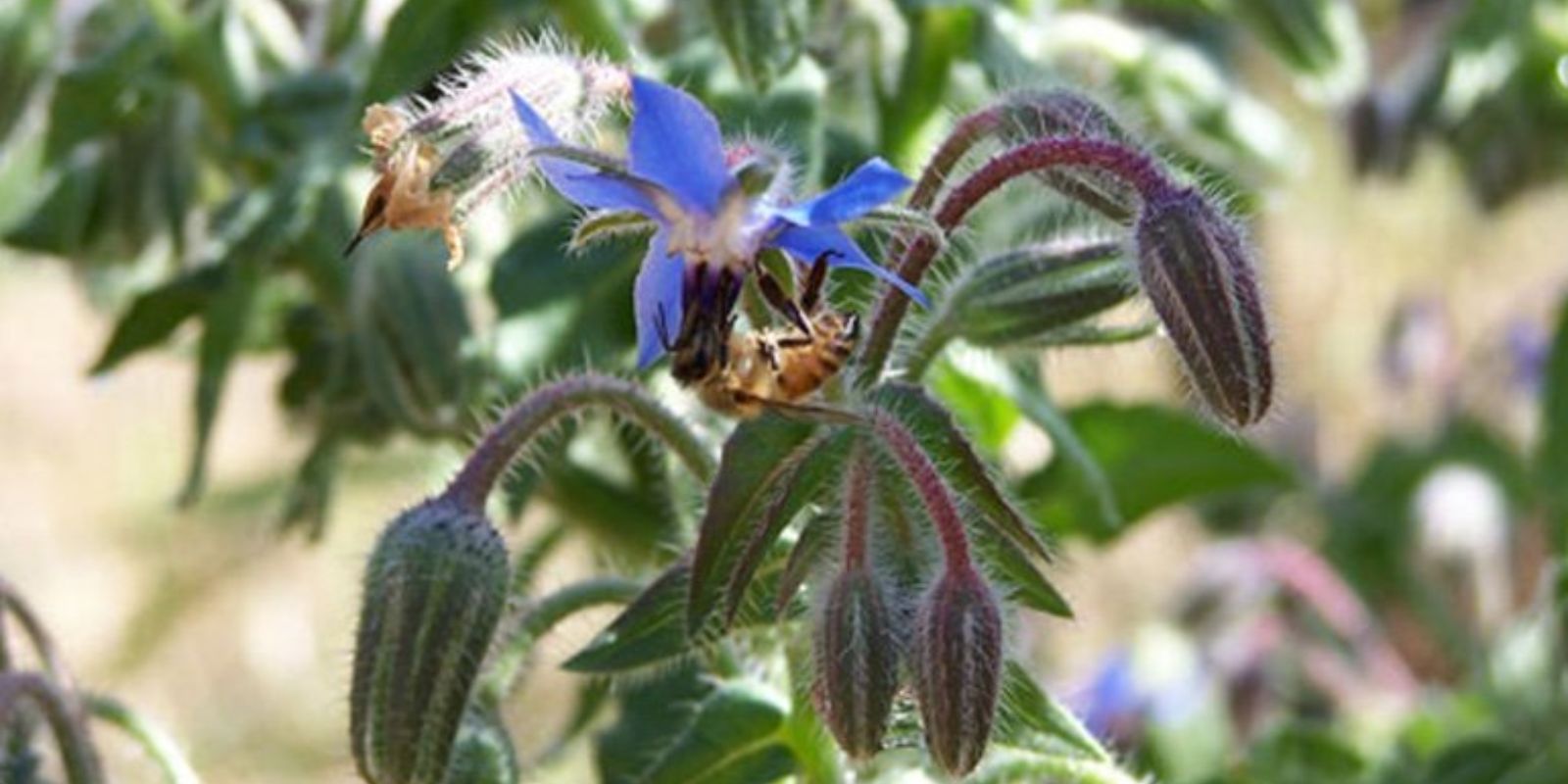Introduction
Borage (Borago officinalis), often referred to as starflower, is a powerhouse herb that has long been cherished for its myriad of uses, both practical and aesthetic. From its edible, vibrant blue flowers to its ability to attract pollinators and enrich soil, this versatile plant is a must-have for gardeners of all skill levels. In this article, we delve into 15 compelling reasons why you should consider growing borage and provide detailed guidance on how to cultivate it effectively.
15 Reasons to Grow Borage
- Edible Flowers:
Borage flowers have a mild cucumber-like flavor and add a delightful touch to salads, desserts, and beverages. They are a favorite garnish for cocktails and summer drinks. - Pollinator Magnet:
Few plants attract bees as effectively as borage. It provides a consistent nectar source, boosting pollination in your garden. - Natural Pest Repellent:
Borage can deter harmful pests like hornworms and aphids, making it an excellent companion for vegetables like tomatoes and peppers. - Soil Enricher:
The deep roots of borage pull up nutrients from the soil, improving its quality. After flowering, the plant can be tilled back into the ground as green manure. - Companion Plant:
Borage works wonders as a companion plant. It enhances the growth of nearby crops like strawberries, squash, and tomatoes. - Medicinal Benefits:
Traditionally, borage has been used to reduce inflammation, alleviate stress, and support adrenal health. Its leaves and flowers are commonly used in herbal teas. - Wildlife Support:
Besides bees, borage attracts butterflies and other beneficial insects, contributing to a balanced garden ecosystem. - Self-Seeding:
Once established, borage is a low-maintenance plant that self-seeds, ensuring its presence year after year without replanting. - Low Maintenance:
Borage thrives in various conditions, including poor, sandy soils. It requires minimal care, making it ideal for beginner gardeners. - Nutrient Booster:
When composted or used as mulch, borage enriches the soil with calcium and potassium, promoting healthier plants. - Stress Reliever:
The plant has been associated with reducing stress and improving mood. Infusions made from its leaves are said to have calming effects. - Culinary Uses:
Beyond the flowers, borage leaves are also edible and can be used in soups, stews, and as a substitute for spinach. - Aesthetic Appeal:
The striking blue flowers add visual appeal to gardens, making it as much an ornamental plant as a functional one. - Herbal Remedy:
Borage oil, derived from the seeds, is rich in gamma-linolenic acid (GLA), which is used in skincare and to support hormonal balance. - Flavor Enhancer:
When planted near vegetables, borage is believed to enhance their flavor, particularly cucumbers and tomatoes.
How to Grow Borage Successfully
- Location Selection:
Choose a sunny spot with well-draining soil. While borage tolerates poor soil, it thrives best in moderately fertile ground. - Sow Seeds Directly:
Borage doesn’t transplant well due to its deep taproot. Sow seeds directly into the soil or a large container. - Planting Time:
Plant seeds after the last frost date. The seeds germinate best in temperatures between 60-75°F. - Spacing and Depth:
Plant seeds about ½ inch deep and space them 12-18 inches apart to give the plants room to grow. - Watering Needs:
Borage prefers moderate watering. Keep the soil consistently moist but not soggy, especially during germination. - Support Pollination:
To encourage blooms, avoid over-fertilizing. Excessive nutrients can lead to more leaves and fewer flowers. - Harvesting:
Pick flowers and young leaves as needed. Harvesting regularly promotes continuous flowering. - Pest and Disease Resistance:
Borage is generally pest-resistant. Its robust nature often wards off common garden pests. - Encourage Self-Seeding:
Allow some flowers to mature and drop seeds if you want borage to self-propagate for the next growing season. - Container Gardening:
If space is limited, borage can thrive in large pots. Ensure proper drainage and place the container in full sun. - Green Manure:
When borage starts to decline, chop it down and incorporate it into the soil to improve fertility. - Overwintering:
In colder climates, borage may not survive winter. Collect seeds in fall to sow next spring.
Integrating Borage Into Your Garden
Borage is a versatile plant that fits seamlessly into vegetable gardens, herb gardens, or ornamental flower beds. Its ability to enhance crop growth and its attractive blue blooms make it a favorite among gardeners. You can also intersperse borage with other pollinator-friendly plants to create a vibrant and productive garden.
Conclusion
Borage is more than just a pretty flower—it’s a hardworking herb that benefits your garden in numerous ways. From boosting soil health to supporting pollinators and providing edible delights, it’s a valuable addition to any garden. By following these growing tips, you’ll soon enjoy the many rewards borage has to offer.
Call to Action:
Have you tried growing borage? Share your experiences and tips in the comments! Don’t forget to tag us in your garden photos.
Hashtags:
#GrowBorage #HerbalGardening #EdibleFlowers #BeeFriendly #SustainableGardening #OrganicGarden #GardeningTips #GreenLiving

